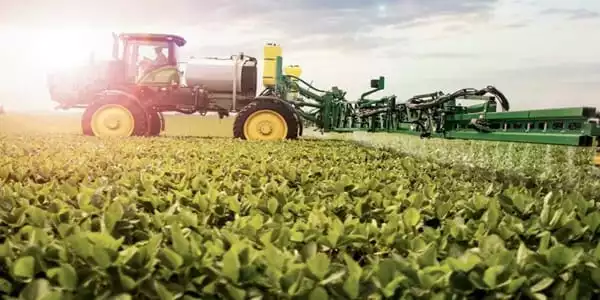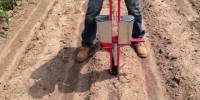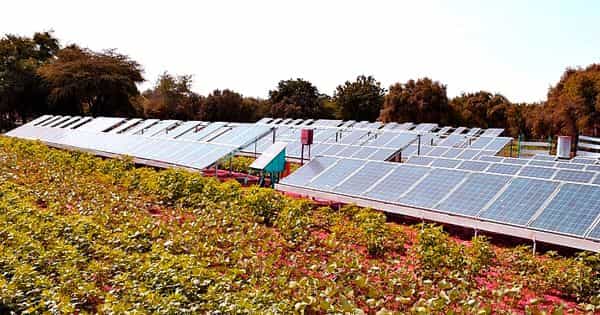Researchers from the University of Illinois mounted hyperspectral sensors on planes to assess nitrogen status and photosynthetic capability in corn. They were able to scan fields in a few seconds per acre using airborne hyperspectral sensing technology. According to Sheng Wang, the study’s researcher and primary author, the airplane hyperspectral sensing technique is not only rapid, but it also delivers significantly higher spectral and geographic resolution than similar studies utilizing satellite imaging.
During the Green Revolution, synthetic nitrogen fertilizers changed agriculture as we know it, catapulting crop production and food security to new heights. Nonetheless, despite gains in crop nitrogen use efficiency, concerns about underperformance continue to drive fertilizer overapplication. Excess nitrogen eventually winds up in waterways, including groundwater, and in the atmosphere as powerful greenhouse gases.
Predicting the amount of nitrogen required by a certain crop in a given year is difficult. The first step is to understand crop nitrogen status in real-time, but measuring leaf nitrogen by hand over the course of a season is neither practicable nor scalable. In a first-of-its-kind study, a University of Illinois research team put hyperspectral sensors on planes to quickly and accurately detect nitrogen status and photosynthetic capacity in corn.
We can monitor the crop’s nitrogen condition and make real-time modifications for agricultural stakeholders using our approach. The nitrogen fertilization rates advised by MRTN are based on the economic tradeoff between soil nitrogen fertilizer rates and end-of-season yield. Our remote sensing method can transmit plant nutrient status into the MRTN system, allowing for real-time crop nitrogen control.
Sheng Wang
“Field nitrogen measurements are time-consuming and labor-intensive, but the airborne hyperspectral sensing technology allows us to scan the fields quickly, at a few seconds per acre. It also has significantly higher spectral and geographical resolution than comparable satellite imaging studies” Sheng Wang, research assistant professor at the University of Illinois’ Agroecosystem Sustainability Center (ASC) and Department of Natural Resources and Environmental Sciences (NRES), agrees. Wang is the study’s principal author.
“Our approach bridges the gap between field measurements and satellites, providing a cost-effective and highly precise approach to crop nitrogen management in sustainable precision agriculture,” he continues. The plane, which was outfitted with a cutting-edge sensor capable of detecting wavelengths in the visible and near-infrared spectrum (400-2400 nanometers), flew over an experimental field in Illinois three times during the 2019 growing season. The researchers also collected in-field leaf and canopy measurements to compare with sensor data.”

“With up to 85 percent accuracy, the flights detected leaf and canopy nitrogen parameters, including some related to photosynthetic capacity and grain output.” “That’s close to the ground-truth quality,” says Kaiyu Guan, research co-author, founding director of the ASC, and associate professor of NRES. “We can even use aircraft hyperspectral sensors to replace ground-truth collecting without sacrificing too much accuracy.” Meanwhile, flying sensors enable us to cover significantly bigger areas at a lower cost.”
Remote sensing detects energy reflected from ground surfaces. The chemical makeup of leaves, particularly nitrogen and chlorophyll content, influences the amount of energy reflected gradually. Hyperspectral sensors detect variations as small as 3 to 5 nanometers across their full spectrum, a level of sensitivity unrivaled by existing remote sensing technologies.
“Other airborne remote sensing methods detect the visible spectrum and maybe the near-infrared, for a total of four spectral bands. That is nowhere near the limit of what we can achieve with this hyperspectral sensor. It’s quite potent.” Guan explains.
The researchers believe these findings will find use in the popular Maximum Return To Nitrogen (MRTN) corn nitrogen rate calculation. Wang elaborates, “We can monitor the crop’s nitrogen condition and make real-time modifications for agricultural stakeholders using our approach. The nitrogen fertilization rates advised by MRTN are based on the economic tradeoff between soil nitrogen fertilizer rates and end-of-season yield. Our remote sensing method can transmit plant nutrient status into the MRTN system, allowing for real-time crop nitrogen control. It has the ability to transform existing fertilization recommendations based on pre-growing season, soil-centric fertilizing to a diagnosis based on real-time plant nutrition, hence boosting agroecosystem nitrogen use efficiency.”
Importantly, the research team devised the most effective mathematical algorithm for detecting nitrogen reflectance data from the hyperspectral sensor. They anticipate that it will be used as newer technologies become available.
“NASA, together with other commercial satellite companies, is developing a new hyperspectral satellite mission. Because we have already shown its accuracy in aircraft hyperspectral data, our research might potentially give the algorithm for those missions “Wang explains.
Guan says the ultimate goal is to bring this technology to satellites, allowing for a picture of every field’s nitrogen condition early in the growing season. Farmers will be able to make more informed judgments on nitrogen side-dressing as a result of this advancement.
Of course, the ultimate goal is to increase the environmental sustainability of nitrogen fertilizers in agronomic systems. And, according to Guan, precision is the way to get there. “In other words, you can’t manage what you can’t measure. That is why we have put so much work into developing this technology.”
















